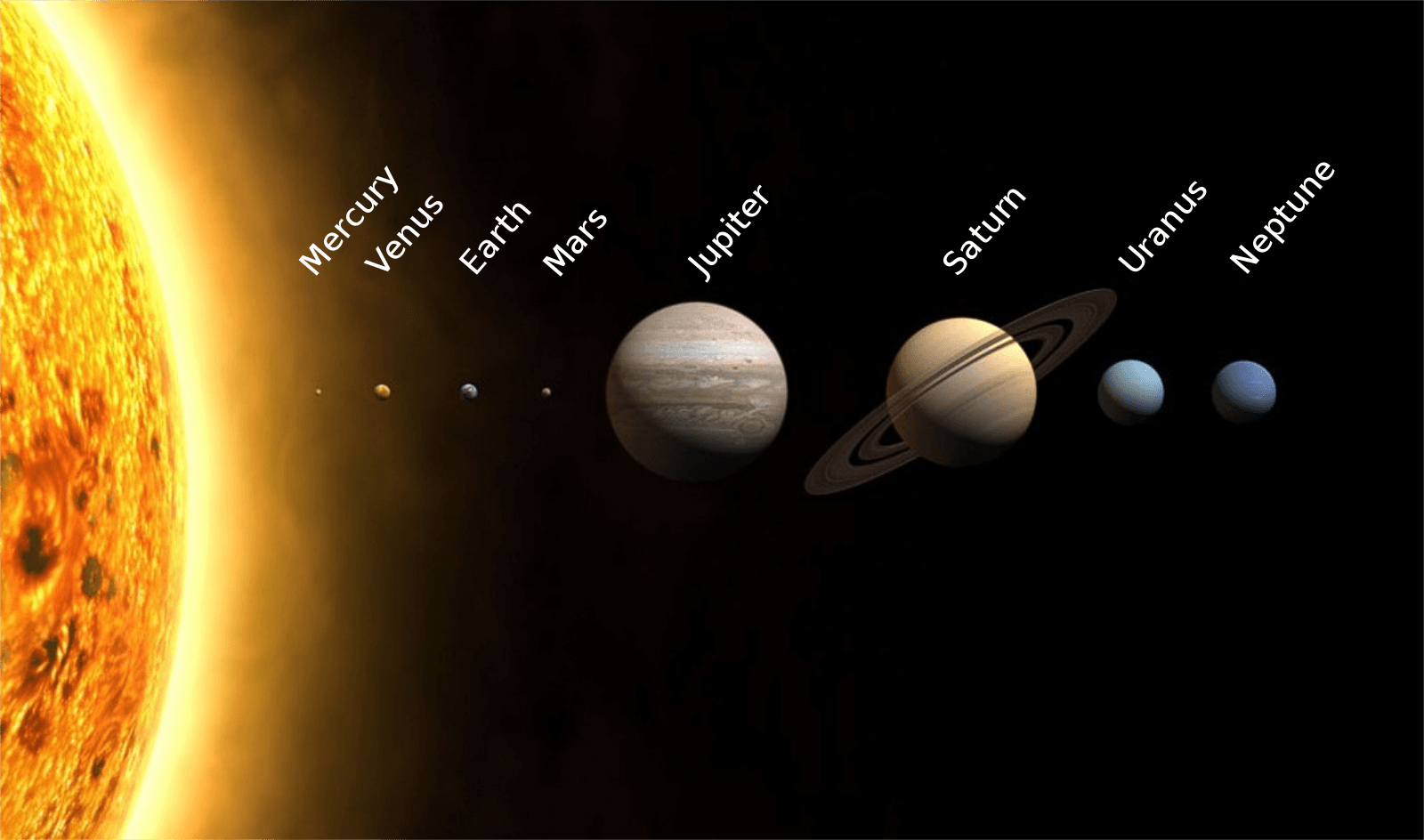The Solar System is humanity’s space neighborhood, where all the lives of all humans will take place. Everyone knows about the Sun and the planets, but rarely does anyone know any more details about it. Learning more about it means learning more about humanity’s origin. That is one of the reasons why humans have always set their eyes up to the sky.
The scientific revolution began with the publication of Nicolaus Copernicus’ De revolutionibus orbium coelestium where he explained that the Sun is at the center of the Solar System. But the Sun is not only the center of the Solar System, it is the Solar System, as it contains more than 99,75% of the total mass in the Solar System. There are billions of other bodies in the Solar System such as comets, asteroids, and the 8 planets, but all these only accounts for the remaining 0,25% of the total mass.
Since Copernicus’s discovery, it is well established that all these bodies rotate around the Sun, and the further it gets from the Sun, the slower they rotate. But, where is the end of the Solar System? There’s no clear answer and it depends on the definition used.
The end of the Solar System can be considered to be located at the limit of the heliosphere, this is, the region where the radiation of the Sun is stronger than the radiation of the rest of the stars. In this case, the Solar System’s edge is at 100 times the distance between the Earth and the Sun or 15000 million kilometers. In other words, if you drove your car at 300km/h, it would take you 5700 years to reach there. The most impressive fact is that 2 human-made spacecraft have already crossed that border: Voyager 1 and Voyager 2.
The other way to define the Solar System is the region over which the gravitational force of the Sun is the biggest force over a body. In this case, the limit is much further, at 50000 times the distance between the Earth and the Sun. At this point lies the Oort cloud, a cloud of billions of icy comets surrounding the Sun.
In this vast region, there are billions of bodies rotating in ellipses around the Sun, and all of them were formed through the same process. Before the Sun even existed, 4500 million years ago, there was a nebula. A nebula is like a giant cloud in space. Because of a distant supernova, which is the explosion of a star, the nebula was extremely compressed causing most of the hydrogen in the nebula to come together. The mass of hydrogen was so big that its gravity started attracting more hydrogen, and the friction between all the particles raised the temperature and pressure until it was high enough for nuclear fusion to take place. This moment is the birth of the Sun.
The rest of the bodies in the Solar System were created similarly by the particles that were not attracted by the Sun. The lighter elements were pushed far by the Sun’s radiation and so the gas giants were formed: Jupiter, Saturn, Uranus, and Neptune. The heavier elements, on the other side, were stuck closer to the Sun forming the rocky planets: Mercury, Venus, Earth and Mars. Finally, asteroids and comets were formed the same way, but they did not manage to attract enough material to grow to the size of a planet. Most asteroids are located in the asteroid belt between Mars and Jupiter and they can’t for bigger bodies because of Jupiter’s gravitational pull. Similarly, comets usually come from Kuiper’s belt, a region beyond Neptune, and the main difference with asteroids is that they are made of ammonia, methane, and water ice instead of rock and metal.
In the beginning, there were trillions of smaller bodies that got gravitationally attracted to each other and started growing in size through a process called accretion, forming only a handful of protoplanets and all the asteroids and comets. During this time, the Solar System was extremely dangerous with millions of astronomical collisions, as that’s how bodies would grow in size. Finally, all the protoplanets either crashed with each other forming the planets currently present in the Solar System or became their moons.
Before the nebula was compressed, it was a 3-dimensional amorphous cloud, however, the Solar System is now mainly flat with all bodies rotating in the same dimension. The reason behind this is the conservation of angular momentum, one of the fundamental properties of the universe. This is the same reason why ice-skaters pull their arms closer to spin faster.
When collisions started, bodies were rotating around the Sun in every direction, similar to how we represent an atom (although that’s not what an atom looks like). However, all the collisions ended up canceling out the velocities in the directions perpendicular to the rotation plane, only leaving bodies to move in that direction, giving it the actual shape.
The size of the Solar System is almost incomprehensible on a human scale, however, when zooming out, it is nothing but a speck of dust in the vastness of our galaxy, the Milky Way; and our Sun becomes one star between billions.
Until not long ago, the Solar System was the only system with known planets, giving it a special value. However, in 1992, the first exoplanet was discovered (an exoplanet is a planet orbiting a star that is not the Sun) removing the “special” tag from our Solar System. And ever since then thousands of more planets have been found, with the most recent estimates putting the total number of planets in the Milky Way somewhere between 100-400 billion.
This opens up the debate about life somewhere else in the universe. Are we alone in the universe?












